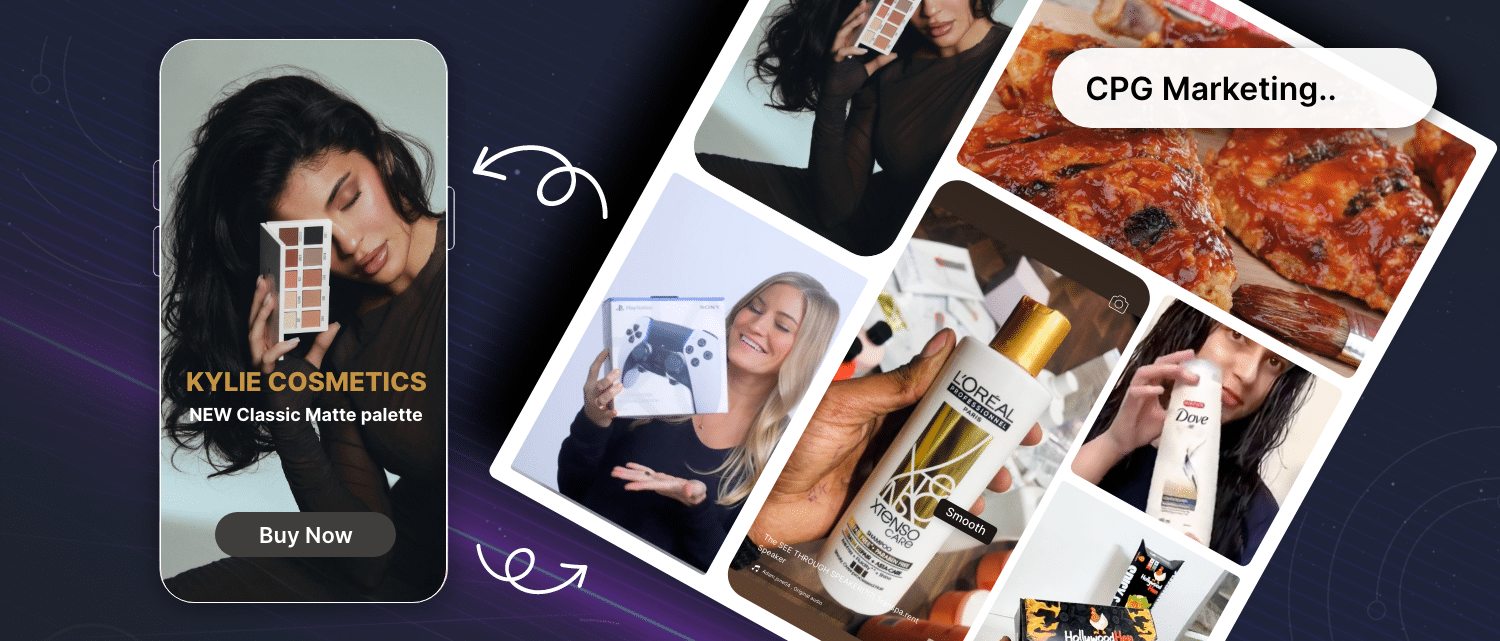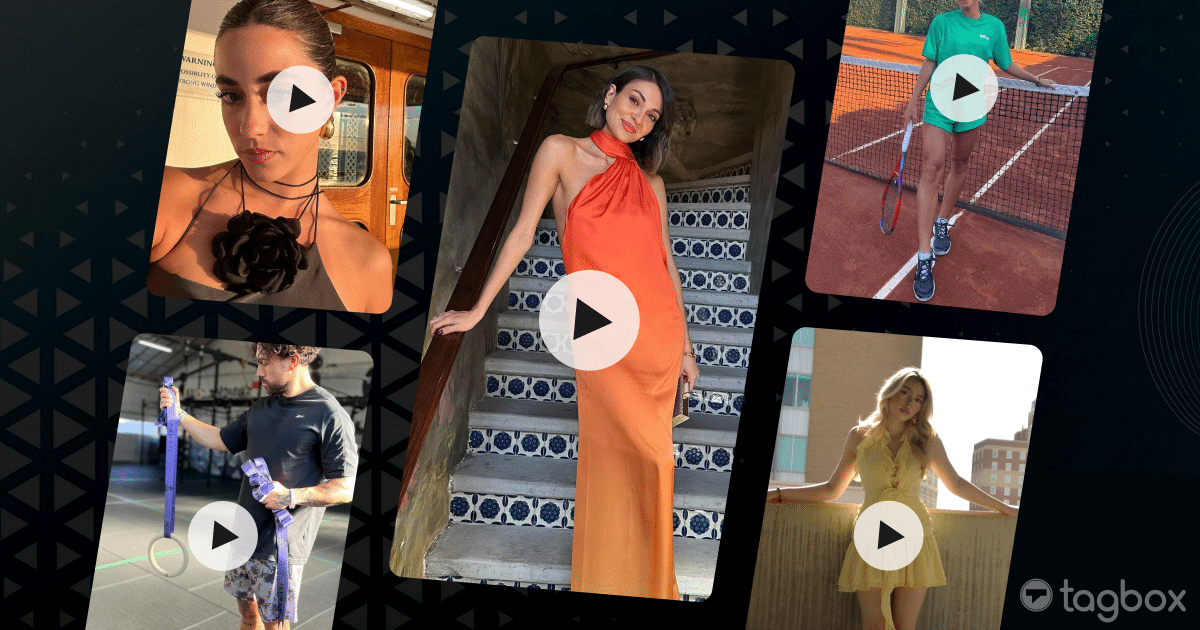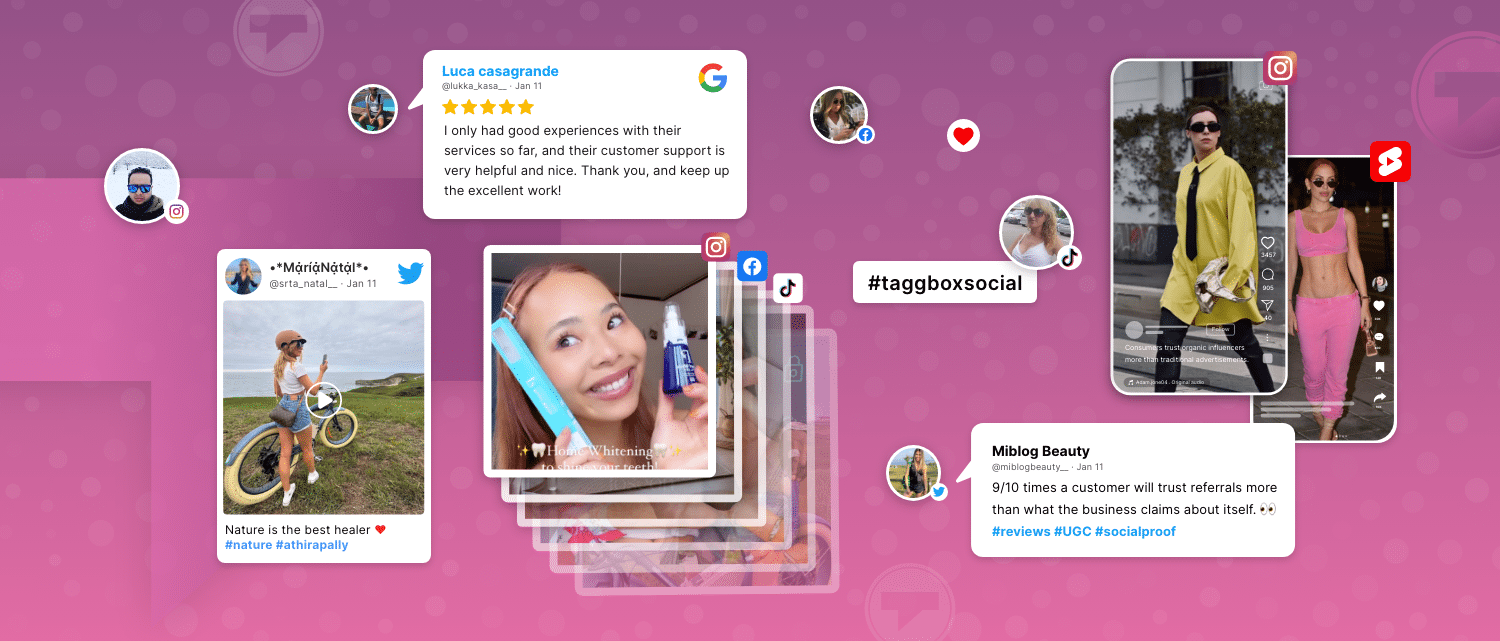What is CPG Marketing (+Trends Every CMO Needs To Know in 2025)
Did you know that CPG brands spent $14.82 billion on social media ads in 2021, a 20.2% increase from the previous year? Well, this year, it is said to increase by 32.5%.
The reason behind this surge is simple: Brands have realized just how crucial it is to have a solid online presence. With more people shopping online, brands have hopped on the social media train to reach their customers.
Consumer packaged goods (CPG) companies face the challenge of capturing attention and building lasting connections with their target audience in this dynamic and ever-evolving industry. CPG marketing is critical in shaping consumer preferences and driving sales, from household essentials to personal care products.
If you’re intrigued by CPG marketing and want to dive deeper into what it entails, you’re in the right place! In this blog section, we’ll provide valuable insights from industry experts. So, let’s explore the ins and outs of CPG marketing together!
What is CPG Marketing?
Have you ever wondered what CPG marketing really is? Well, let’s break it down for you in simple terms.
CPG stands for Consumer Packaged Goods, which refers to products used daily, like food, beverages, toiletries, and household items.
CPG marketing involves promoting and selling these goods to consumers, but it’s more than just putting them on a shelf and hoping for the best. CPG marketers must analyze consumer behavior, understand their needs and preferences, and develop and implement effective marketing strategies.
This could include anything from eye-catching packaging design to engaging social media campaigns.
What is the Current State of CPG Marketing?
Consumer packaged goods (CPG) marketing is rapidly evolving to meet the changing needs of consumers.
- CPG marketing emphasizes a customer-centric approach, using data-driven insights and personalized strategies.
- Direct-to-consumer (D2C) channels are growing, allowing CPG brands to establish online stores and gather valuable data.
- Social media and influencer marketing are crucial in building brand awareness and connecting with consumers.
- Sustainability and ethical consumerism drive CPG marketing, with companies adopting eco-friendly practices and transparent supply chains.
- Data analytics and AI enhance CPG marketing strategies, providing insights and personalizing experiences.
- CPG marketing is defined by digital transformation, sustainability, and delivering personalized experiences.
Adapting to consumer demands, embracing technology, and focusing on sustainability are critical factors in successful CPG marketing. By staying ahead of trends, companies can build lasting connections and thrive in a competitive marketplace.
CPG Marketing Strategies that Work
Marketing for everyday products, or Consumer Packaged Goods (CPG), has come a long way to keep up with finicky consumers.
CPG companies use clever tactics to grab people’s attention to stay ahead of the game. Check out these winning strategies that are killing it in the world of CPG marketing:
Let Your Customers – Use UGC in Marketing
User-generated content (UGC) has become a powerful marketing tool for CPG companies. They actively encourage customers to create and share content related to their products, such as reviews, photos, and videos.
By showcasing this UGC on their marketing channels, companies build a sense of community and brand loyalty and benefit from the authenticity and social proof that comes from actual customers endorsing their products.
Building a Community
CPG companies recognize the importance of fostering a sense of belonging among their customers. They create online spaces, such as social media groups or exclusive clubs, where like-minded consumers can connect, share experiences, and engage with the brand.
These communities provide a platform for customers to interact and serve as a valuable source of feedback, insights, and product recommendations.
Partner with Influencers
Influencer marketing has become a prominent strategy for CPG companies. Companies can tap into the influencers’ existing fan base and credibility by collaborating with popular influencers who align with their brand values and target audience. In fact, 72% of marketers used Instagram influencer marketing in 2022.
Influencers create engaging content featuring the products, provide authentic recommendations, and offer exclusive discounts or promotions, driving awareness, credibility, and conversions.
Get Smart with AI
CPG companies are turning to artificial intelligence (AI) to gain valuable insights into consumer behavior. By analyzing large data sets, AI technology helps identify patterns, trends, and preferences, enabling companies to tailor their marketing campaigns and offers to individual consumers.
This personalized approach enhances customer engagement, drives conversions, and boosts sales.
Social Commerce
CPG companies are embracing the power of social media platforms to facilitate direct sales. They leverage features like shoppable posts and integrated checkout options to create seamless consumer shopping experiences.
By integrating commerce into social media, they capitalize on the widespread use of these platforms and tap into the convenience of purchasing products directly from posts or ads.
Website Makeover
CPG companies are investing in optimizing their websites to provide customers with a seamless and user-friendly experience. By studying user behavior and employing techniques like A/B testing, companies enhance navigation, streamline the checkout process, and improve overall website performance.
These improvements help guide customers smoothly through their buying journey, increasing the likelihood of conversions and repeat purchases.
Social Media Magic
CPG companies recognize the immense reach and engagement potential of social media platforms like Instagram, Facebook, and YouTube. They leverage these platforms to share captivating visual content, engage with customers through comments and direct messaging, and tell their brand stories.
By building an active and interactive presence on social media, CPG companies can connect with customers in real time, build brand affinity, and create a community of loyal followers.
These strategies showcase how CPG companies leverage various digital marketing techniques and platforms to reach and engage consumers effectively, ultimately driving brand awareness, customer loyalty, and sales.
As a CPG brand, it is essential for you to sit and have a conversation with your customers; what better place to do this other than social media?
Social Media Challenges Encountered by CPG Brands
Are you a CPG brand planning to hop on social media? You need to know it won’t be easy, so let’s talk about social media challenges for CPG brands. It’s a big deal in today’s digital world, and some challenges are specific to CPG marketing.
You know how social media platforms change faster than you can blink, right? And those algorithms? Always evolving! It means CPG brands need to be nimble and adjust their strategies on the fly. But that’s not all.
Standing out in a sea of competition is tough, too. You must create content that grabs people’s attention and speaks to them. And, of course, there’s the question of measuring your ROI.
How do you know if your social media campaigns are actually paying off? That’s where tracking engagement, conversions, and customer feedback comes in.
It’s all about making social media work for you, reaching your target audience, building brand loyalty, and getting those accurate, tangible results. Let’s see how to conquer these challenges!
Example of CPG Marketing – #bestsuccessstories
The North Face
You’ve got to check out The North Face’s Instagram game. They’re absolutely killing it! One of the things that sets them apart is how they leverage user-generated content (UGC).
They encourage their outdoor-loving community to share their epic adventures while sporting The North Face gear. And guess what? The North Face features these authentic UGC photos on its Instagram feed.
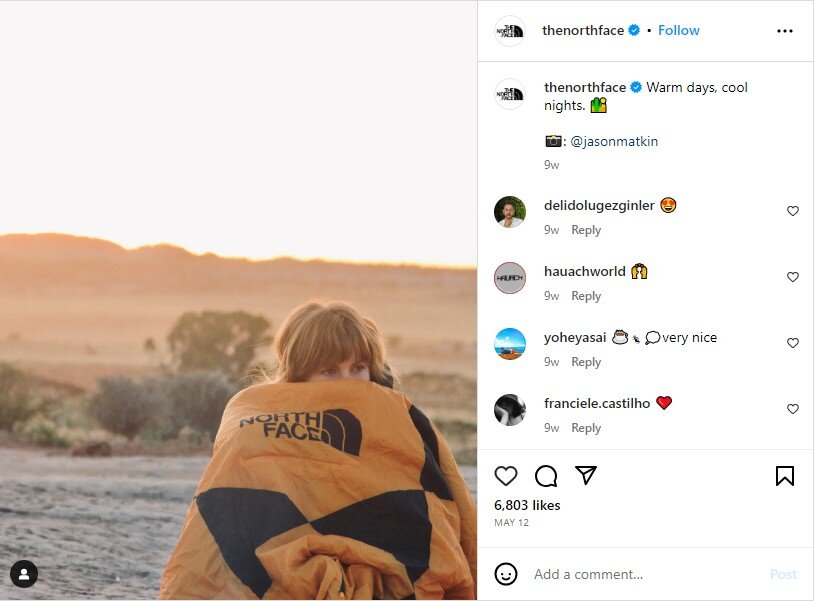
It’s a win-win because it showcases its products in real-life situations and gives its customers a chance to shine. They’ve created a tight-knit community and inspired others to get out and explore. It’s a brilliant move to take their CPG marketing on social media to a whole new level.
Too Faced
When killing it on Instagram, Too Faced, a famous CPG brand, knows how to steal the spotlight. Their Instagram game is on fire! Like many other successful CPG brands, one of the reasons for their success is their clever use of user-generated content (UGC).
They encourage their followers and makeup enthusiasts to share their stunning makeup looks using Too Faced products. Then, Too Faced showcases this UGC on their Instagram feed, giving their customers a chance to shine.
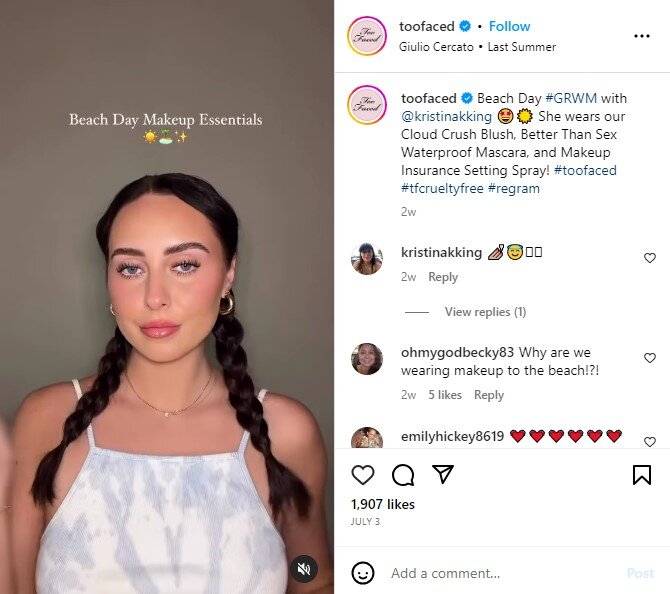
This strategy highlights the versatility of their products and creates a vibrant and engaged community. With every UGC feature, Too Faced celebrates the creativity of its fans and inspires others to experiment with their makeup.
It’s a winning formula that has helped Too Faced become a trailblazer in CPG marketing on Instagram.
Kinder Joy
Parents love clicking adorable snaps of their kids and posting them online. Many of these pictures are of a baby with Kinder Joy in their hand, and Kinder Joy, a super-intelligent CPG brand, reshares them on their socials.
What happens next is pure magic. The parents, excited to see their little one showcased by Kinder Joy, happily reshare the post on their own stories, spreading the brand’s reach even further. It’s a win-win situation!
This strategy of leveraging user-generated content (UGC) is not limited to Kinder Joy; many other CPG brands are hopping on this trend. And you know what? The audience loves it!
It feels more authentic and natural compared to paid ads and sponsored posts. By embracing UGC ads, Kinder Joy has witnessed a significant boost in content engagement, and they’re reaping the rewards of this brilliant approach.
How Taggbox Can Help in CPG Marketing on Social Media?
You know what’s interesting? We’ve observed that all the successful brands following CPG marketing have one thing in common: they make great use of user-generated content (UGC). And guess what? Taggbox is the ideal platform for CPG marketing as it enables brands to create and publish UGC campaigns across different marketing touchpoints.
With a comprehensive suite of products, Taggbox empowers CPG brands to harness the potential of UGC for building brand trust, driving engagement, and increasing conversions. Let’s see what else Taggbox can do for your CPG marketing.
- Collecting User-generated content
User-generated content provides social proof and fosters brand trust. By showcasing real experiences shared by real customers, CPG marketing can be boosted as it reflects credibility and reliability.
With Taggbox, brands can easily collect and curate the most authentic and influential UGC from various social media and review platforms, reinforcing their brand’s trustworthiness.
- Engagement
People love to explore user images and reviews that highlight positive experiences and satisfaction levels.
UGC campaigns inspire consumers and enhance their engagement with the brand.
Taggbox’s UGC solutions help with CPG marketing by allowing brands to build UGC galleries, hashtag campaigns, social feeds, and reviews, creating opportunities for consumers to interact with the brand on social media platforms.
- Increase Conversions
Including UGC in the buying journey can significantly impact conversions. Studies show that 90% of online shoppers trust UGC, and incorporating it into the marketing strategy can lead to a 30% increase in conversions.
With Taggbox’s user-generated content platform, brands can activate visual UGC and reviews in their CPG marketing, maximizing click-through rates, conversions, and sales.
- Influencer Community
CPG marketing can turn communities into influencers if brands leverage the content generated by their natural brand advocates.
Taggbox’s UGC tools enable brands to quickly discover, curate, and amplify their social community’s most relevant and influential user-generated content.
By harnessing the power of influencer campaigns, CPG brands can create a network of brand influencers who authentically promote their products or services.
- Campaign Customization
Brands can customize UGC campaigns to align with their brand goals.
With creative customizations, themes, and advanced content moderation, CPG marketing campaigns can be personalized as they will resonate with their audience.
Start your CPG marketing journey
CPG marketing on social media is a powerful tool for brands to reach and engage with their target audience. With the increasing importance of having a solid online presence, CPG companies are investing significant resources in social media marketing.
This includes utilizing AI technology to understand consumer behavior, leveraging user-generated content to build brand loyalty and authenticity, creating communities for like-minded consumers to connect, collaborating with influencers to amplify brand reach, optimizing websites for seamless user experiences, and harnessing the power of social media platforms to tell compelling brand stories.
By adopting these strategies, CPG brands can successfully navigate social media marketing challenges, stand out in a competitive landscape, and build lasting customer connections.
By embracing CPG marketing on social media and leveraging the potential of user-generated content, brands can thrive in the dynamic world of consumer packaged goods.
